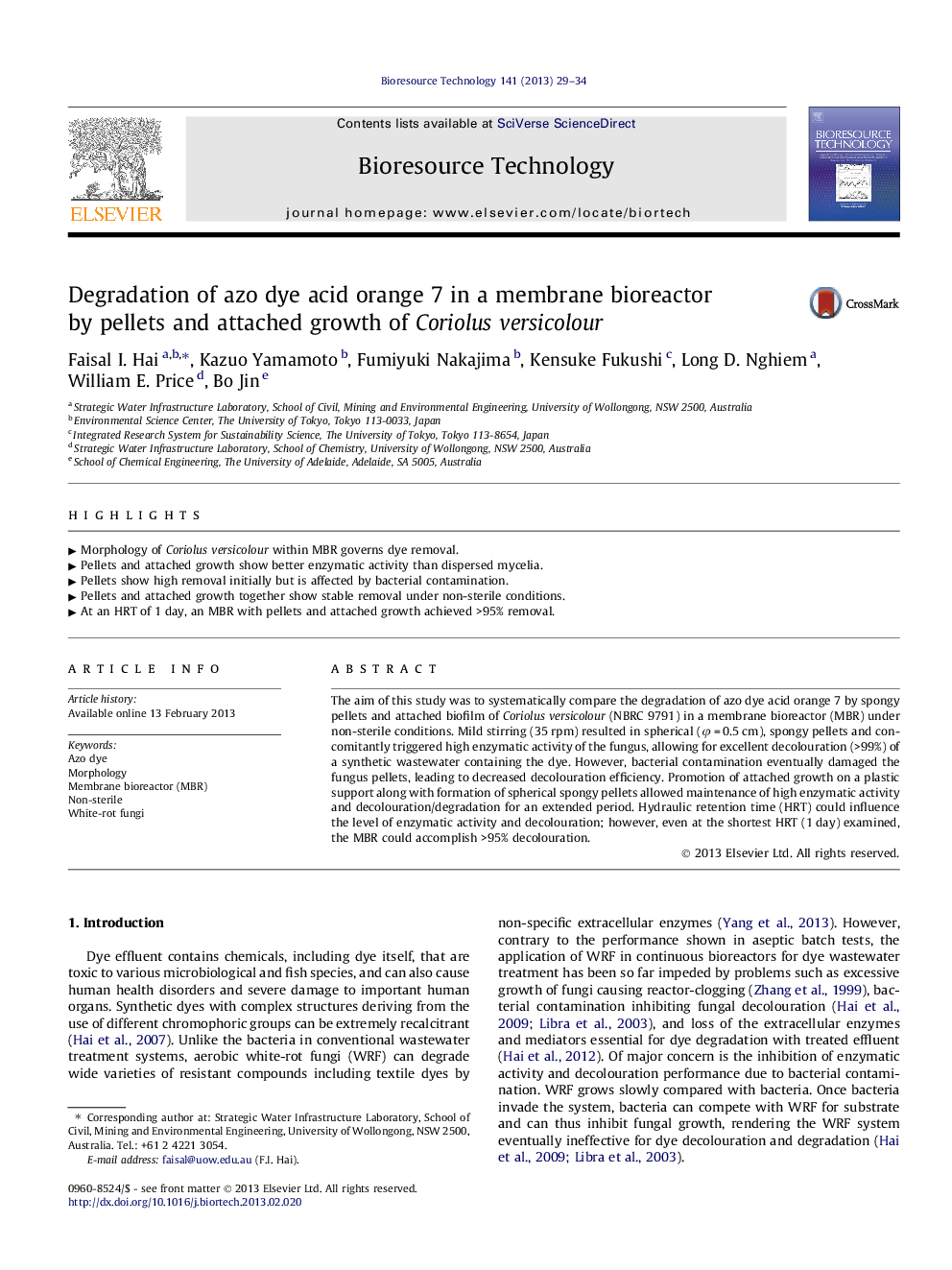| Article ID | Journal | Published Year | Pages | File Type |
|---|---|---|---|---|
| 681083 | Bioresource Technology | 2013 | 6 Pages |
The aim of this study was to systematically compare the degradation of azo dye acid orange 7 by spongy pellets and attached biofilm of Coriolus versicolour (NBRC 9791) in a membrane bioreactor (MBR) under non-sterile conditions. Mild stirring (35 rpm) resulted in spherical (φ = 0.5 cm), spongy pellets and concomitantly triggered high enzymatic activity of the fungus, allowing for excellent decolouration (>99%) of a synthetic wastewater containing the dye. However, bacterial contamination eventually damaged the fungus pellets, leading to decreased decolouration efficiency. Promotion of attached growth on a plastic support along with formation of spherical spongy pellets allowed maintenance of high enzymatic activity and decolouration/degradation for an extended period. Hydraulic retention time (HRT) could influence the level of enzymatic activity and decolouration; however, even at the shortest HRT (1 day) examined, the MBR could accomplish >95% decolouration.
► Morphology of Coriolus versicolour within MBR governs dye removal. ► Pellets and attached growth show better enzymatic activity than dispersed mycelia. ► Pellets show high removal initially but is affected by bacterial contamination. ► Pellets and attached growth together show stable removal under non-sterile conditions. ► At an HRT of 1 day, an MBR with pellets and attached growth achieved >95% removal.
